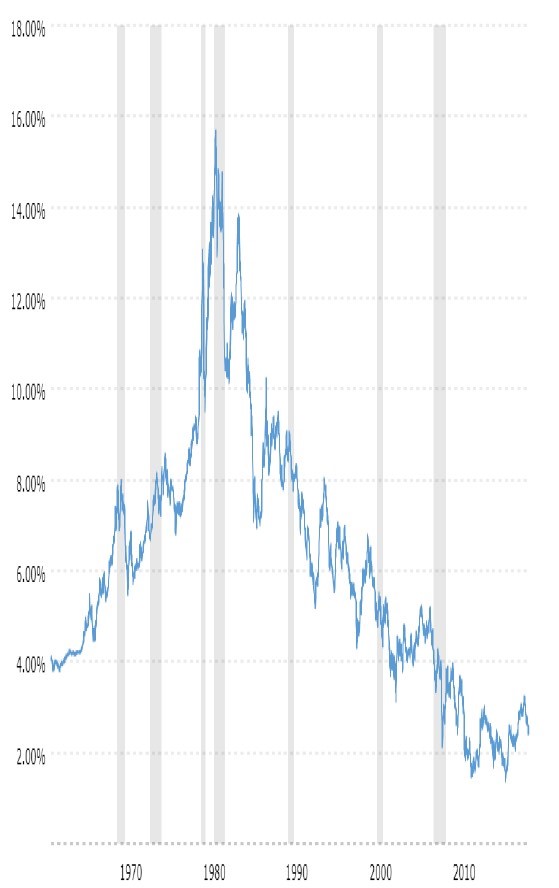May 2019
By: Pat Guinet, CIMA®

Figure 1 - 10 Year US Treasury Rate - 54 Year Historical Chart
Since the early 1980’s to the present we have been fortunate to have experienced a long-term(secular) decline in the 10 Year US Treasury Rate(US-10YR). The US-10YR has been a good barometer for the cost of borrowing money over this period. Borrowers have benefited from a declining cost of carrying debt in their business and/or personal lives. Investors buying debt(bonds) have enjoyed the proverbial wind at their backs since bond prices tend to go up when interest rates decline. In addition, the stock market from the early 1980s to the present has also steadily appreciated (with some volatility) and benefited from the secular decline in interest rates and the cheaper cost of debt. Leading up to the Great Recession of 2009, borrowers had the option of lower interest rates and payments on their debt OR borrowing more debt for the same payment. Many borrowers chose to increase the amount of debt they carried. All of us vividly remember the consequences of this decision to our economy and real estate.
The benefit and magnitude of declining interest rates for the past 40 years cannot be duplicated going forward. Our most optimistic expectation is for interest rates to level off and trend sideways in a range. The benefit of cheaper borrowing costs will be more muted in the future. Our concern at GFP is the impact of this new interest rate environment on investment returns for our clients, their lifestyles, and their retirements.
As author and founder of The Interest Rate Observer, Jim Grant eloquently writes;
"The same low rates—by some measures, the lowest in 3,000 years—have penalized savers, incentivized dubious risk-taking, expedited the growth in federal indebtedness, and perpetuated the lives of businesses that would have failed in the absence of easy credit. They have widened the gulf between rich and poor, thrown a spanner into our politics and inflated the cost of retirement."
Part 3 of 4 of our series will discuss one potential scenario: The Nikkei 225 - 1987 to the Present.